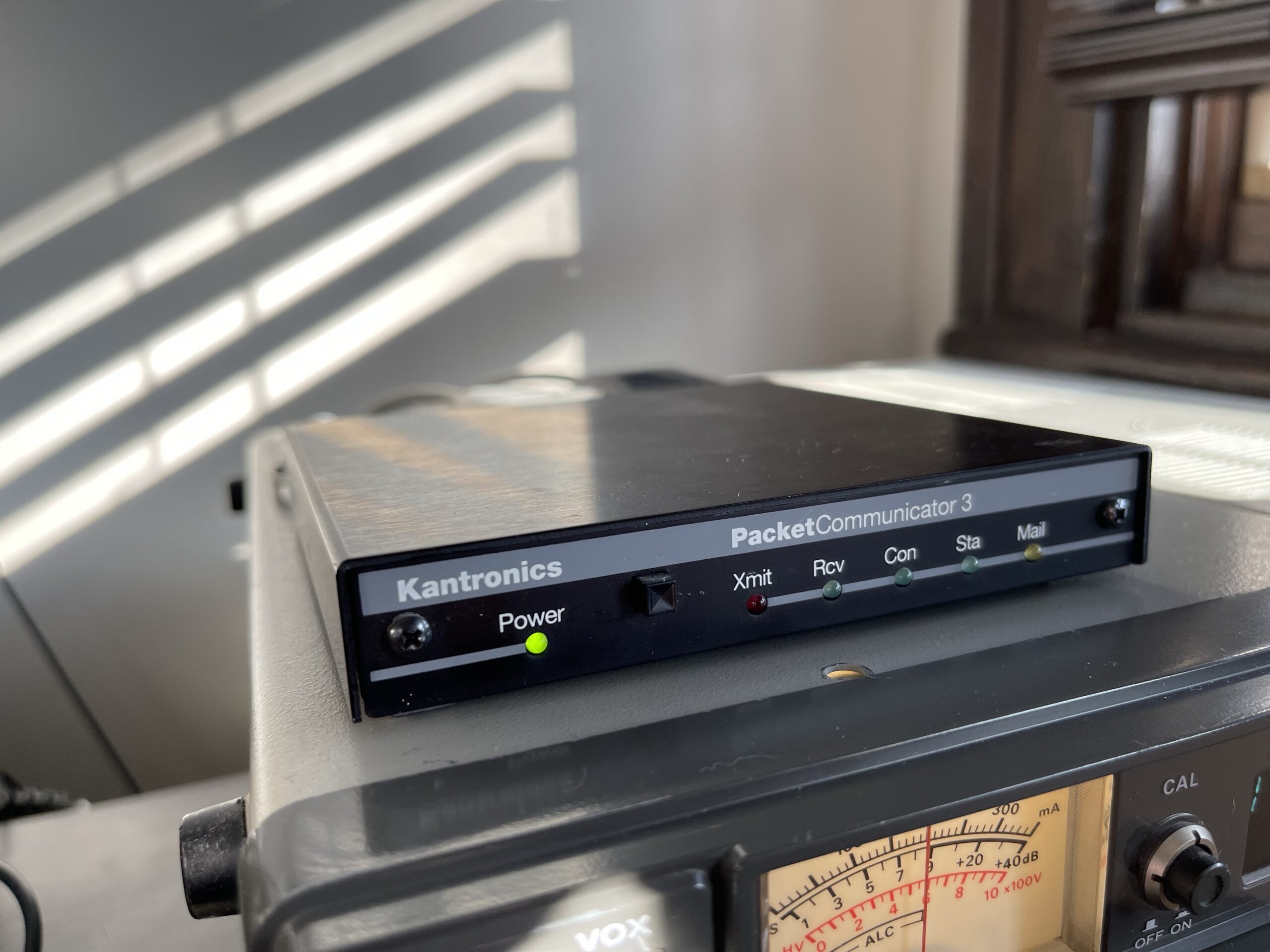
Packet Radio
My first digital mode was packet, 1200 baud on 2 meters. The decade was the 90s and I purchased a used MFJ-1270 with a Yaesu FT-2500M from a club member (the Shoreline Amateur Radio Club, W1BCG).
At that time, packet was popular for messaging, specifically for independent personal mailboxes as opposed to “store and forward” type messaging like Winlink. There were also simple BBS type systems as well as personal mailboxes running within the most popular TNCs back then.
A TNC (terminal node controller) is a hardware device which is similar to a modem, except it is intended for use on RF or with a radio as opposed to a phone line. The packet TNCs used on 2 meters and 70 cm use the AX.25 protocol over the air, and a command line set of instructions for usage. Each TNC had slightly different command sets.
Packet TNCs are still manufactured today and are widely available. One of the more popular TNCs for 2 meters was made by Kantronics. In fact, the KPC-3 Plus is available and uses USB for the computer connection whereas the original KPC-3 used a serial connection to the PC.
Shortly after using the MFJ-1270 for a few months, I purchased a Kantronics KPC-3, which had a personal mailbox/BBS and was much smaller in size compared to the MFJ. At that time, I didn’t have a good location for operating on 2 meters and had to digipeat off my neighbors setup and then again to get out and connect to other nodes. As a result, I didn’t use it as much then as I do today.
Automatic Packet Reporting System
Since the 90s, updated methods and uses for packet radio have emerged. APRS (Automatic Packet Reporting System) is one of the most popular uses for packet today. APRS uses the “unproto” mode of AX.25, which even old TNCs support. This mode is more of a “beacon” mode, sometimes without a specific target station. These packets don’t require acknowledgment and may contain a directive for digipeating. APRS can be used to report location, weather, velocity, sending messages and other data.
You’ll find APRS built into many HTs and mobile rigs today. In the United States, APRS operates on 2 meters at 144.390 Mhz at 1200 baud. Almost none of the HTs which support APRS expose the built in TNC for external use. There is a Kenwood HT (very popular) TH-D74 which does expose the TNC for use with a PC over Bluetooth for example. Unfortunately this HT is no longer in production. It’s really a shame that other manufacturers of HTs with TNCs don’t expose the TNC for external connections/usage.
You can search for and track APRS stations on aprs.fi. Once a digipeater or node connected to the internet receives an APRS packet, it will push that data to this central repository. There is also a mechanism to route packets over the internet and out to a destination digipeater. This allows for packets to not only be digipeated across the country via RF but also via the internet.
Reconnecting with Packet on 2 meters
After getting back into the hobby after a few decades, I was surprised to hear quite a bit of packet activity on 2-meters using an SDR.
I dusted off my old Kantronics KPC-3, wired it up to my FT-991A using the rear data port, which so happens to be the same as an old PS/2 keyboard connector. I bought a male to male PS/2 cable from Amazon and a few DB-9 connectors. The KPC-3 uses a DB-9 connector for the radio interface. Since most PCs these days don’t come with a serial port, I also purchased a USB serial adapter.
I made another cable for the KPC-3 to connect it to an HT for portable use. I still have the cable I had made to connect the TNC to the Realistic HTX-202/404 back when I first used this TNC.

You can find wiring diagrams for TNCs for many radios on the web. The site that I found helpful is ohiopacket.org – it has diagrams for many older radios.
Today I use packet for APRS, P2P messaging and Winlink. You can purchase a hardware TNC or you can use software which can encode and decode packet.
Packet on HF
There are similar modes on HF, including PACTOR, VARA HF (via a pc), and others. Packet on HF allows for much farther connections compared to 2 meters. Although the connection is slower (less bits per second) on HF, if the internet were unavailable, you could use an HF packet mode to exchange messages across the globe.
I’ve recently posted an article on my experience using packet on HF.
I regularly check in to a few packet nets weekly, such as Winlink Wednesdays and a local net on Thursdays. It’s good practice to become experienced in different methods for sending and receiving messages over packet. Whether it be HF, 2 meters or another band, at your QTH or portable, knowing how to exchange messages without infrastructure such as the internet could be useful.
